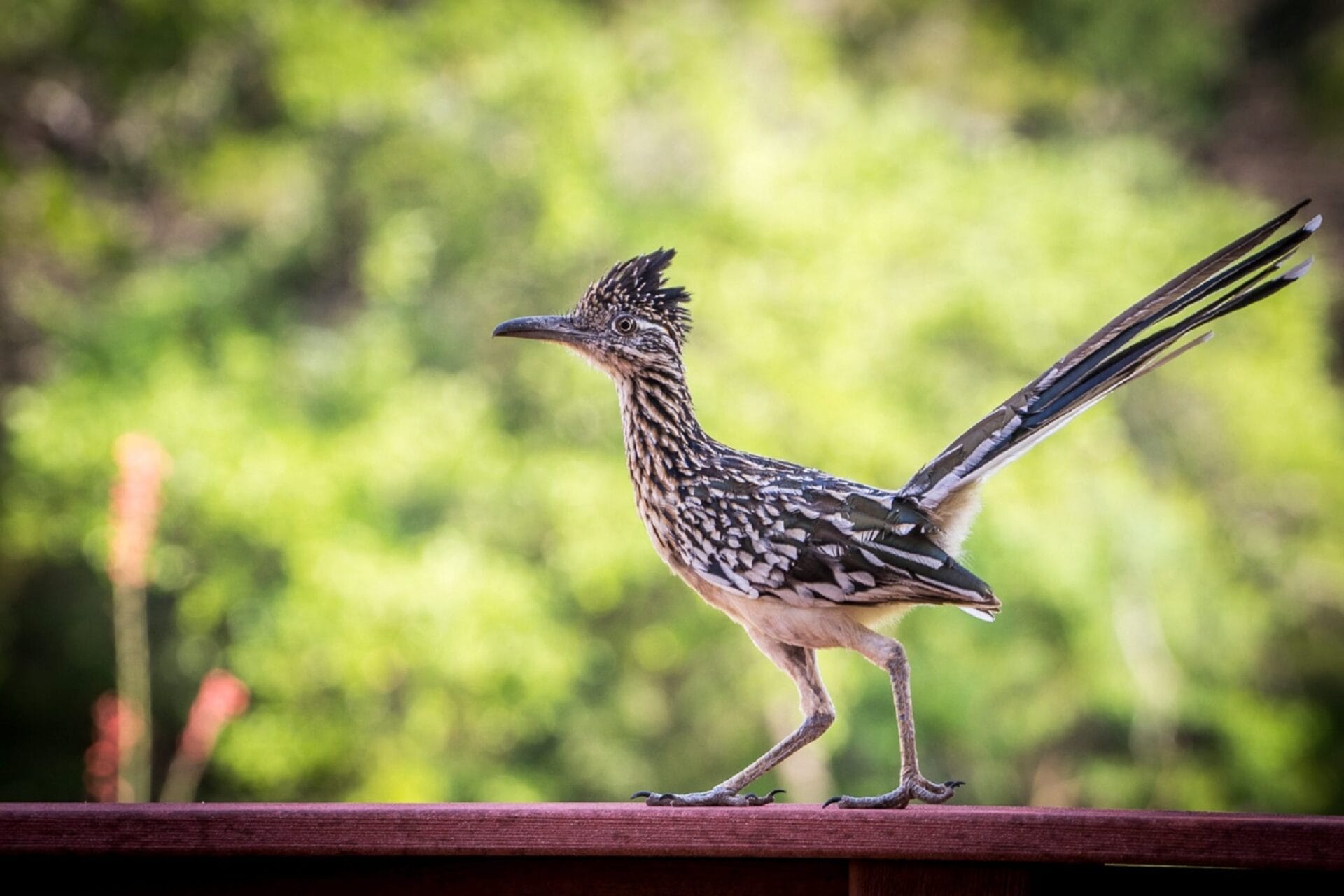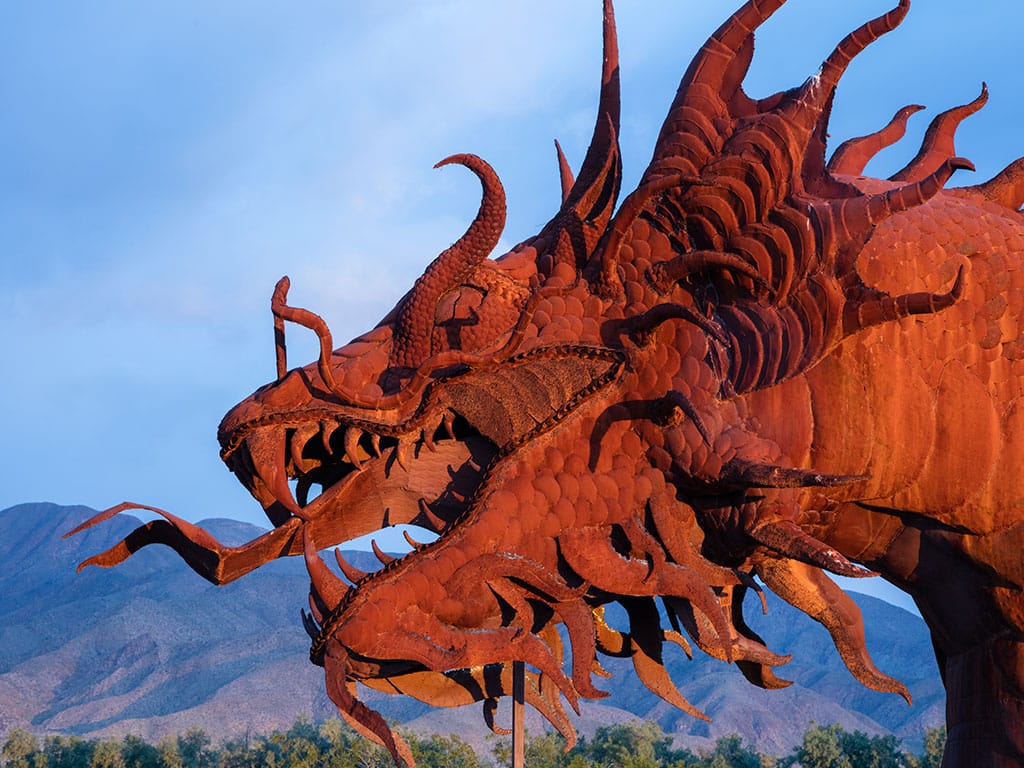Stay A Little Longer And Save! Book 3 Nights, Get 1 Free! LEARN MORE
Creepy, Crawly and Darn Near Cuddly Desert Dwellers
Creepy, Crawly and Darn Near Cuddly Desert Dwellers

‘Round here, it’s not hard to find some real fascinatin’ creatures. Because livin’ in a place as hot and dry as the Anza-Borrego Desert takes a whole lot of resourcefulness and a little bit of luck. If you’d like to get to know some of our most notorious neighbors and all the right smart ways they’ve learned to adapt to desert livin’, then for land’s sake, keep on readin’.
The Mammals of These Here Mountains
Some steer clear of the midday heat. Others stay close as they can to the water. The mammals of Anza-Borrego Desert are always mindful of how they can stay hydrated without overheatin’.
Big Horn Sheep
These 150 lb. beasts need to drink several gallons of water every week. So they never like to venture far from their water source. In fact, you can often see ‘em while you’re hiking through the palm oasis on the Palm Canyon Trail.
Mule Deer
For these grazers, high noon is high time for a nap. They beat the worst of the heat by foraging for food at dawn and dusk and napping through most of the day.
Kit Foxes
You’d be mighty lucky if you managed to catch sight of one of these cute little nocturnal critters. Their oversized ears help them both release body heat and listen for prey. And their digestive systems have adapted to get all the water they need from their food.
Black Tailed Jackrabbit
One look at this giant-eared speed demon, and you’re pretty darn likely to think of a certain animated rabbit who has some cartoonishly large ears too. Those ears help the black tailed jackrabbit listen for danger, while its powerful legs can carry it up to 30 mph in a sporadic zig-zag pattern to outmaneuver predators.
Kangaroo Rat
This big-eyed nocturnal rodent right here just might be the craziest mammal in the whole dang desert. With powerful back legs and a real long tail, it can jump up to six feet in the air to avoid being caught.
Real Resourceful Reptiles
Without the ability to produce their own body heat, reptiles don’t much mind the hot desert sun. But, with a limited number of bugs, berries and rodents to eat and predators around every corner, these scaly critters have had to learn how to think on their feet—or, in some cases, their bellies.
Zebra-Tailed Lizard
This right here isn’t just the most commonly seen reptile in the entire Anza-Borrego Desert State Park—it’s also the fastest reptile in all of North America. When it feels threatened, it can pop up on its hind legs and run at speeds of up to 18 mph. That’s a heck of a lot faster than the folks around town can.
Western Whiptails
When a lizard gets caught by the tail, it might seem like it’s game over. But these handsome critters have an ace up their sleeves. They can detach their own tails, which squirm wildly when released. That often gives them the distraction they need to escape. And in a matter of months, they’ll grow new tails to boot.
Chuckwalla
Growing up to 16 inches in length, the chuckwalla is the largest lizard in the Anza-Borrego Desert. Chuckwallas are natural rock dwellers, and when they’re feeling threatened, they rush to their favorite rock crevice and start swallowing air until their bodies are inflated like balloons and wedged so tightly into the crevice that it’s mighty hard for predators to pry ‘em out.
Sidewinder
There are four different types of rattle snakes in the Anza-Borrego Desert, and the sidewinder is a real remarkable one. With mighty powerful sensory organs—called loreal pits—on either side of their snout, they can detect subtle changes in infrared rays and pinpoint their prey in total darkness.
The Brilliant Birds of Borrego Valley
Out in the desert, you won’t find many worms—no matter how early you get up. So ‘round here, the birds have had to learn to survive on pollen, nectar and a pretty unconventional collection of insects—like tarantula hawk wasps.
Road Runner
Standing about two feet tall, these lanky birds are capable of flying, but usually prefer to get around on foot. Fact is, thanks to their long tails and lean legs, they can run at speeds of up to 20 mph—which sure does come in handy when these speed demons are tracking down one of their favorite meals: the giant tarantula hawk wasp.
Costa’s Hummingbird
By surviving on a diet of nectar and insects, hummingbirds play a mighty important role in pollinating local the cacti, trees and shrubs. And this species right here looks pretty dang stylish while it’s at it. Male Costa’s have bright purple heads and throats that almost look like they’re glowin’ when the light hits ‘em just right.
Swanson’s Hawk
With white-lined wings and stunning spots and stripes all over, this feathery fellow is one of the most anticipated birds in Borrego Valley. It spends its winters in Mexico and its summers on the Great Plains, and it survives in the desert by only stayin’ for a few days. If you happen to be here in February, keep your eyes to the sky for this handsome hawk right here.
Incredible Desert Insects
Survivin’ the food and water scarcity ‘round here requires insects to develop some pretty dang interesting abilities. And while lots of folks find the desert’s insects to be downright creepy, it’s important to remember than these little scoundrels are generally more scared of you than you are of them.
Haddrus Scorpions
With light yellow legs, tail and pinchers, these little critters do a pretty dang good job camouflagin’ in the desert sands. They burrow into loose dirt or sand to stay out of site during the day. And they only come out to hunt with their venomous stingers under nighttime’s cloak of darkness.
Tarantulas
‘Round here, there are plenty of Texas brown and black reversum tarantulas. But to avoid becoming a hawk’s breakfast, tarantulas generally keep themselves inside their own burrows. So you’re not likely to see ‘em unless you’re lucky enough to be in the park during their mating season in September and October when male tarantulas venture out in the open to go lookin’ for love—literally.
Tarantula Hawk
Despite its name, this creature is actually a giant wasp with a large black body and bright orange wings. Its stinger carries venom powerful enough to paralyze a tarantula. And when it’s ready to lay its egg, that’s exactly what it does. The female wasp stings an unlucky tarantula, drags it back to her nest and lays her egg inside the tarantula’s body. That allows her larvae to feed on the still-living tarantula until it’s strong enough to hatch. While they’re not known for bein’ aggressive toward humans, we highly recommend steerin’ clear of tarantula hawks, since their sting is said to be pretty painful.
‘Round here, wildlife is regarded as one of the greatest treasures of the Anza-Borrego Desert. So anytime you see one of our non-human neighbors, be sure to be respectful. After all, it takes a whole lot to survive the brutal summer heat and rare rainfall. And with the crazy camouflagin’ and high-speed sprintin’ these critters have done to keep themselves safe, they’ve earned a little respect




